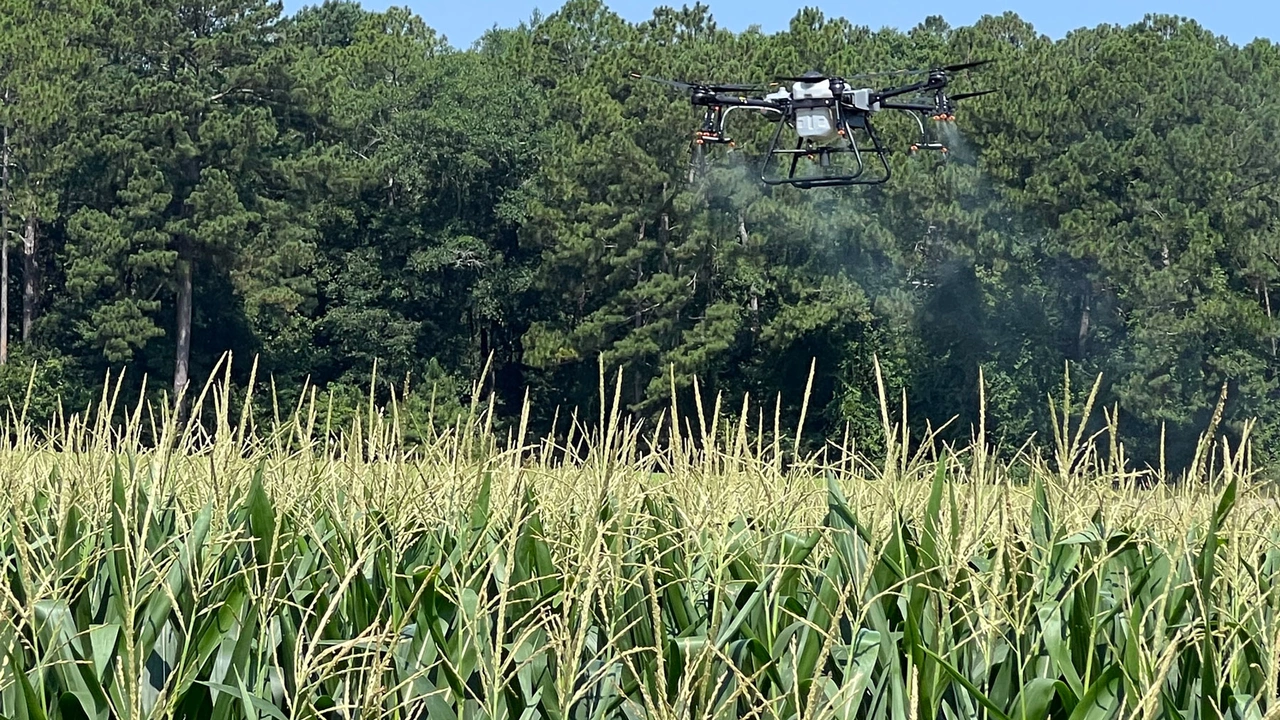Would you know what to do if your drone suddenly lost signal or battery mid flight? Well, using a drone for spraying in Auburn, Alabama, can be a lot easier for farmers. This technology improves labor while improving work efficiency and reducing time for operations. But you need to be aware of some hidden risks that come with these amazing drones. Minor mistakes while using these drones can result in both financial losses and crop damage, which may cause you to face legal consequences. Therefore, this blog will help understand everything about risk avoidance tips that every farmer must know. So, keep on reading!
The Hidden Danger of Beehives and Drone for Spraying in Auburn, Alabama
Did you know that drones and bees don’t go well together? If you’re using a drone, you must watch out for beehives. The vibrations and noise from drones can disturb bees, making them aggressive. What’s worse is spraying near beehives that can harm pollinators, which are important for crop production.
So, what’s the solution? Always scout your field before flying. If you spot a beehive, adjust your spray route or notify a local beekeeper. That way, you protect both your crops and nature’s tiny workers.
Power Lines Can Be Deadly for Your Spraying Drone
You’ve probably seen birds sitting on power lines without a care in the world. But your drone won’t be as lucky. Power lines are one of the biggest hazards for drone operators. A single miscalculation can send your expensive equipment crashing down. So, before takeoff, survey the area for overhead wires. Plan your route carefully and use height restriction settings to avoid flying too close. If you’re unsure about clearance, take a test flight without spraying. After all, it’s better to be safe than sorry.
The Surprising Risk of Temperature Inversions in Spraying
Temperature inversion is something most farmers don’t think about. This happens when warm air traps cool air close to the ground, causing pesticides to drift unpredictably. If you’re spraying in the early morning or late evening, you might be wasting chemicals and even damaging neighboring crops.
To avoid this, always check weather conditions before spraying. If the air feels unusually still or hazy, wait for better conditions. A little patience can save you from costly mistakes.
Why Clogged Nozzles Can Ruin Your Entire Crop?
Imagine spending hours prepping your drone for spraying only to realize later that the nozzles were clogged. Instead of an even application, some areas get too much spray while others get nothing. The result? Patchy crops, wasted chemicals, and frustration.
To prevent this, clean your nozzles regularly. After every flight, inspect them for debris or chemical buildup. A quick rinse and proper maintenance can keep your spraying drone in top shape.
Static Electricity as the Silent Threat to Your Spraying Drone
This is a risk that rarely gets mentioned. When your drone moves through dry air, it can build up a static charge, interfering with its electronic system. In the worst cases, static discharge can cause system failures mid-flight. To reduce the risk, always store your drone in a dry, controlled environment. If conditions are dry, use an anti-static spray on key components. Small steps like these can make a big difference in your drone’s longevity.
Speaking of reliable drones, Hinterland Drones has some of the best spraying drones on the market. Their equipment is designed to withstand harsh conditions, making spraying safer and more efficient.
Mixing Chemicals Wrong Can Destroy Your Drone’s System
Many farmers think they can mix chemicals freely inside their drone’s tank. But you must know that some chemicals react badly when mixed, forming thick residues that can clog nozzles and damage internal parts. If you’re not careful, your drone for spraying in Auburn, Alabama, could break down in the middle of a job.
Before mixing, always read the chemical labels. If you’re unsure, do a small compatibility test before loading the tank. Following manufacturer guidelines can prevent costly repairs and downtime.
The One Emergency Plan Every Drone Operator Must Have
We all are aware that technology can sometimes fail. Even the best drone for spraying can experience signal loss, battery failure, or unexpected crashes. That’s why every farmer needs an emergency landing plan.
Always map out safe landing zones before takeoff. Make sure your drone’s return-to-home function is properly set. And most importantly, keep an eye on battery life. A well-planned emergency strategy can save you from losing your drone as well as your investment.
Conclusion!
Using a drone for spraying in Auburn, Alabama, can be incredibly beneficial, but it comes with risks. From avoiding beehives to watching out for power lines, every detail matters. Keeping your nozzles clean, mixing chemicals correctly, and preparing for wildlife interference can save you from costly mistakes. So, are you ready to be part of a growing community of smart farmers embracing drone technology? Contact Hinterland Drones now for expert assistance and premium agricultural drones.
